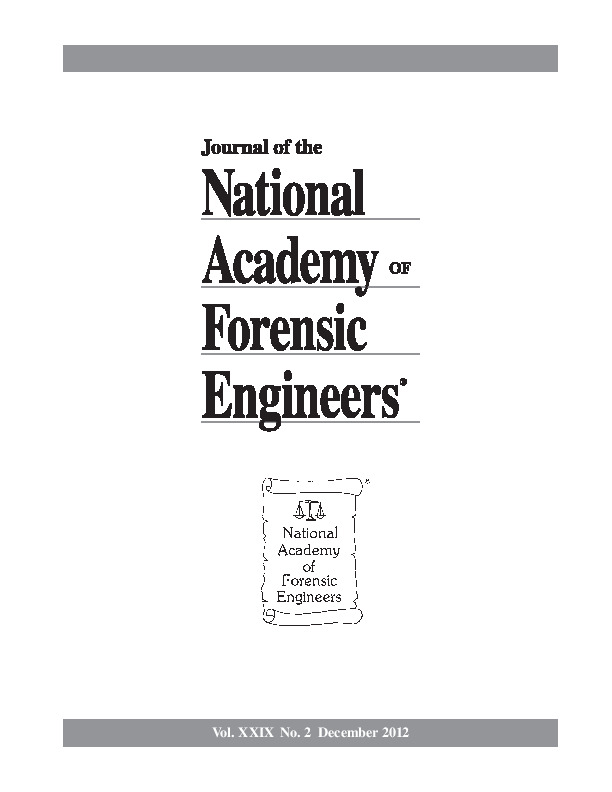Forensic Engineering Investigation of An LP-Gas Installation And an Analysis Of Odor Fade
DOI:
https://doi.org/10.51501/jotnafe.v29i2.773Keywords:
Gas, propane, thermodynamics, kinetics, odor fadeAbstract
The First Part Of This Presentation Is A Case Study Involving A Domestic Propane Gas System, Having A Buried Line Between The Supply Tank And The Residence. The Gas Line Was Pierced During A Landscaping Project. This Breach Was Undetected And Gas Leaked Underground; Migrating Towards The House Where It Entered Under The House. The Fugitive Gas Found A Source Of Ignition, Resulting In An Explosion And Death Of The Single Occupant. Odorant In The Gas Apparently Did Not Warn The Occupant. What Performance Improvements Correlate? Dot And Non-Dot Helmets Were Tested To Determine Impact Performance At Velocities Exceeding Standardized Testing Velocities. Three Types Of Dot Approved And Three Types Of Non-Dot Approved Helmets Were Tested At Two Speeds Outside Of The Federal Testing Standards In The United States. The Analysis Was Performed Using An Inverted Pendulum Sub-System Experimental Device With A Hybrid-Iii Anthropometric Dummy Cranium And Neck. Results Quantify The Performance By Category, Model, And Experiment By Test Metric.Downloads
Published
2012-01-01
How to Cite
Anderson, Robert N., and Petersen James A. 2012. “Forensic Engineering Investigation of An LP-Gas Installation And an Analysis Of Odor Fade”. Journal of the National Academy of Forensic Engineers 29 (2). https://doi.org/10.51501/jotnafe.v29i2.773.
Issue
Section
Articles
License
Copyright (c) 2012 National Academy of Forensic Engineers

This work is licensed under a Creative Commons Attribution-NoDerivatives 4.0 International License.
All rights © Journal of the National Academy of Forensic Engineers.
Full statement regarding the author's license of copyright to the NAFE is shown on the Copyright section of the Submissions Page.






